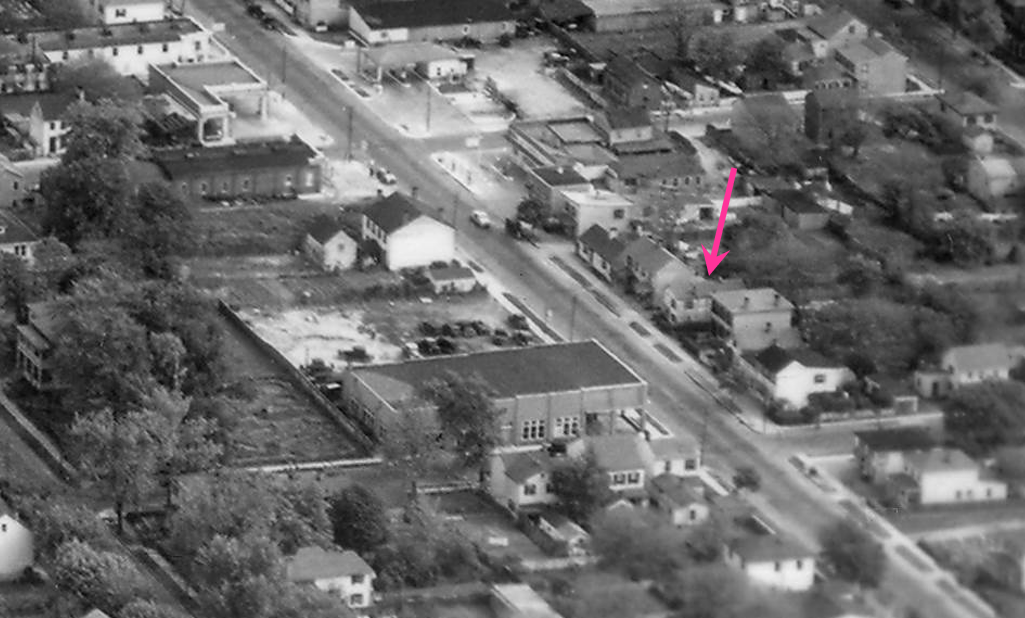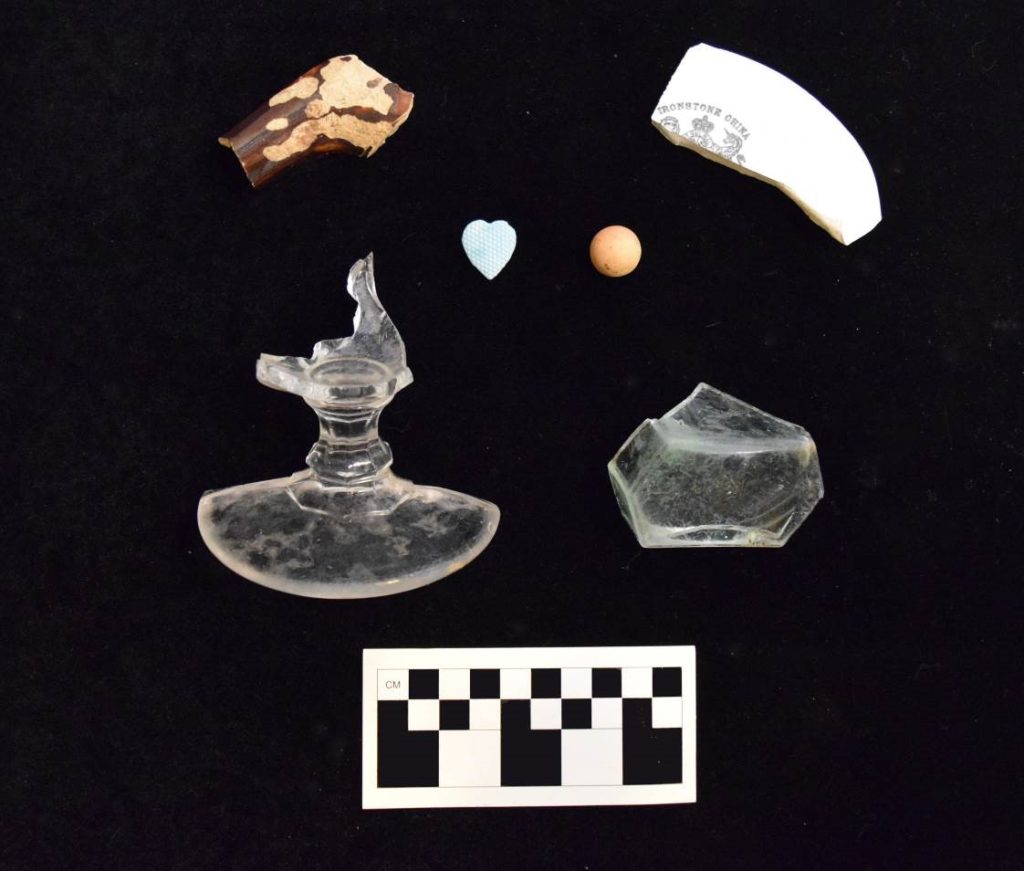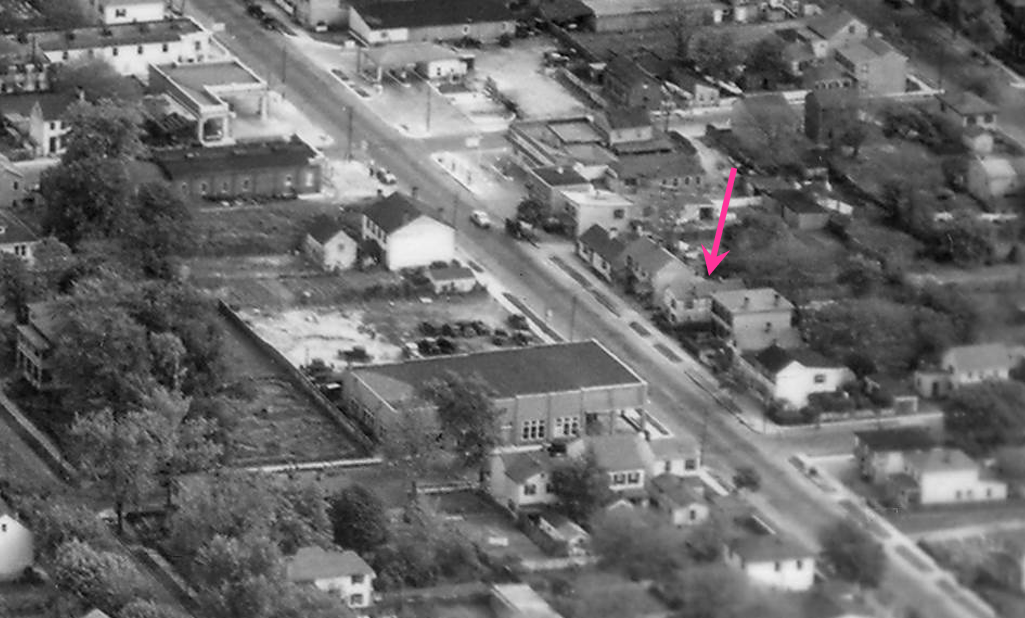By Elyse Adams, Dovetail Lab Manager
In March 2022, Dovetail Cultural Resource Group (Dovetail) conducted archival research and a two-day archaeological excavation at 1416 Princess Anne Street in downtown Fredericksburg, Virginia. These combined efforts shed light on a notable Jim Crow-era African-American-owned boarding house in the city—the only such site excavated archaeologically in Fredericksburg.

The house at 1416 Princess Anne Street was constructed around 1872 and sold to Susan H. Lattimer in 1905. By 1910, records indicate that the dwelling was being utilized as an African American boarding house. The building was sold to Emma Carter in 1914, the first Black owner of the property, who continued to run the building as a boarding house. The dwelling was in use as an African-American-occupied boarding house for the next 50 years.The longest inhabitants, sisters Mary E. Jackson and Nellie Smith, lived in the home from 1940 through the 1980s, eventually purchasing the residence themselves in 1978. The property was sold and demolished in 1990 after Mary E. Jackson had moved into a nursing home; the lot remained empty and fenced off until present-day construction began.

A large variety of artifacts were noted during the excavation. Most dated to the occupation period of the home from the last quarter of the nineteenth century through the third quarter of the twentieth century. Most artifacts were manufactured between 1900 and 1940, the period when the home was at the peak of its use as an African-American boarding house. The personal items excavated from 1416 Princess Anne Street especially reflect the daily lives of those who dwelled there, providing valuable insight on their participation in a free consumer market in the face of social and economic limitations on Black residents during this time. Most importantly, this is the first collection of artifacts retrieved from a site with a known African American owned and occupied boarding house during the Jim Crow era. The artifacts reflect the types of products in use by the residents and an assortment of personal items which provide us with a closer and more individualized look at the lives of those who called this building home. These objects denote consumer choices in individual tastes, as many of the functional items were also highly decorative. Pictured below are several of these decorative items including hand-painted Japanese Meiji-era (1868-1912) Celadon teapot sherds, a highly ornate and relatively expensive piece.

sherd, refined earthenware plate base sherd with maker’s mark, hexagonal aqua bottle base, clear glass goblet
fragment. Center: glass heart-shaped adornment of unknown function, a clay marble
Items such as a 1930s purse handle, a heart-shaped glass jewelry charm, porcelain doll parts, medicinal bottles, and ceramic plates and cups represent both personal and daily life for the residents.The presence of toys like doll parts and marbles may suggest the presence of children.


.
This expansion on the narrative of a marginalized population offers valuable details and a more complete picture of the lives of the people of Fredericksburg. African Americans, women, and children are repeatedly left out of the historical records, making an assemblage so firmly connected to such groups invaluable data to preserve. While the collection is small and the dig was limited, work here provided a notable step in telling this story.
References
National Park Service (NPS)
1933 Aerial Image of Fredericksburg. Image 18aa, box 128. Copy on file, Fredericksburg-Spotsylvania National Military Park, Fredericksburg, Virginia.
WorthPoint
2022 Antique Japanese Seto Celadon Teapot Hand Painted Enamel Flowers Meiji. Electronic document, https://www.worthpoint.com/worthopedia/antique-japanese-seto-celadon-teapot-2029843889, accessed April 2022.

